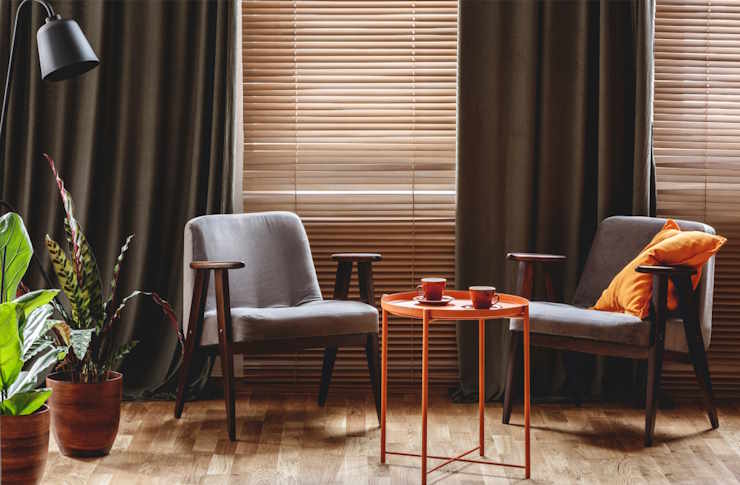Upgrade Your Windows: Expert Guide to Blinds & Curtains
Refresh your rooms with the right window treatments. This comprehensive guide covers blinds, curtains, blackout options, installation tips, and upkeep advice so you can choose stylish, functional solutions for privacy, light control, and energy savings. Learn about materials, styles, and costs to make informed decisions for every room.

Upgrade Your Windows: Expert Guide to Blinds & Curtains
Types of Blinds and How They Work
Window blinds come in several configurations to suit different needs and aesthetics. Venetian blinds use horizontal slats that tilt to control glare and privacy; they’re versatile and work well in contemporary interiors. Vertical blinds are built with long vertical vanes and are particularly effective for sliding glass doors and wide expanses of glass because they stack neatly to one side. Roller blinds provide a clean, modern look: a fabric panel rolls around a tube and disappears into a compact cassette when not in use, offering minimal visual clutter. Roman blinds blend the softness of fabric with the function of blinds; when raised they fold into graceful pleats that add warmth and texture to a room.
Each blind type offers different levels of light control, insulation, and design impact. Consider how much light modulation you need and how the treatment will pair with furniture, trim, and color schemes in the space.
Curtain Styles, Fabrics, and Design Choices
Curtains bring softness and style as well as practical benefits. Sheer curtains filter sunlight and create an airy ambience, while heavier drapes deliver more privacy and insulation. Common header styles include tab-top for a relaxed feel, grommet (eyelet) for modern ease and even folds, and pinch-pleat for a more formal, tailored appearance.
Fabric selection affects look and maintenance: cotton and linen are breathable and easy to launder but may wrinkle; silk and velvet offer a luxurious finish but usually require professional cleaning; blends and polyester options can be durable and lower maintenance. Think about how a fabric’s texture, weight, and opacity will influence room brightness, acoustics, and perceived scale.
Layering curtains and blinds is also popular: a sheer layer can soften daylight while an inner blackout or heavier blind provides privacy and darkness when needed.
Why Blackout Treatments Matter
Blackout curtains and blinds are designed to block nearly all incoming light, which makes them ideal for bedrooms, media rooms, or nurseries. Beyond creating darkness, blackout linings improve temperature regulation by reducing heat gain in summer and heat loss in winter, which can lower energy use. They also protect upholstery and flooring from UV fading and can help create a better sleep environment by minimizing light-induced disruptions.
Blackout solutions are available across product types: roller blinds with blackout fabric, curtains with a blackout lining, and specialized shades designed to seal light at the edges. If you need total darkness, consider how a treatment fits the window frame and whether edge gaps are sealed.
Installing and Caring for Window Treatments
Correct installation is essential for both function and longevity. Many homeowners handle simple installations—like fitting roller blinds or hanging curtain rods—on their own, but more complex setups (built-in valances, motorized shades, or exacting blackout requirements) are often best left to professionals. A pro can ensure proper measurements, secure mounting, and smooth operation.
Routine care preserves appearance and performance. Dust blinds regularly with a microfiber cloth or vacuum with a soft brush attachment; for deeper cleanings follow manufacturer instructions since materials vary. Curtains often require different treatments depending on fabric—machine wash, gentle cycle, or dry clean only—so check labels. For stains or sun-damaged fabrics, timely cleaning or replacement helps maintain a fresh look.
Choosing What’s Right for Each Room
Match treatments to room function: bedrooms benefit from blackout options and sound-absorbing heavier drapes; living rooms can combine sheers with decorative curtains for layered lighting control; kitchens and bathrooms need moisture-resistant fabrics or easy-to-clean blinds. Consider the window’s size and orientation: south-facing windows may need greater solar protection, while north-facing rooms may prefer lighter fabrics that maximize natural light.
Budget and longevity are important too. Investing in higher-quality materials and professional installation often pays off through improved durability and better performance over time.
| Window Treatment Type | Average Cost Range | Best For |
|---|---|---|
| Venetian Blinds | $25–$100 per window | Adjustable light control, modern rooms |
| Roman Blinds | $50–$200 per window | Elegant interiors, fabric-centric designs |
| Blackout Curtains | $30–$150 per panel | Bedrooms, home theaters |
| Sheer Curtains | $20–$80 per panel | Living spaces, layered looks |
Prices, rates, or cost estimates mentioned in this article are based on the latest available information but may change over time. Independent research is advised before making financial decisions.
Final Considerations
Selecting the right mix of blinds and curtains can dramatically change a room’s feel while delivering practical advantages like privacy, light management, and energy savings. Start by defining each room’s needs—privacy, darkness, insulation, or purely decorative impact—then choose styles and materials that meet those goals. When in doubt, test samples in your space, measure carefully, and consider professional help for precise installs. With thoughtful choices and proper care, your window treatments will enhance both the comfort and appearance of your home for years to come.






